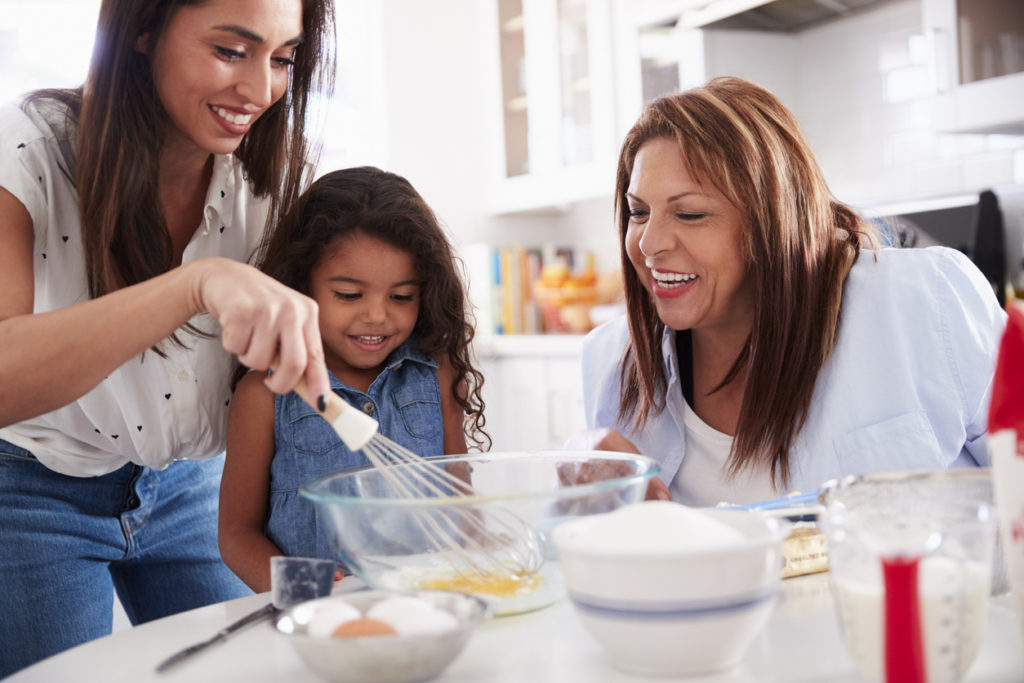Numbers & Counting
Numbers & Counting
- Start with a small number of objects.
- Allow children to point at, touch, or move the ingredients to count correctly.
- When children are learning to count a set of objects, they need to learn that the last number they say is the total number of things in the set.
- While cooking, families can ask children to count out two, three, or four pieces of food, and then ask how many pieces of food there are in total.
- After counting, you might say, “So, how many are there in all?” or “How many do we have altogether?” or just, “So, how many do we (or you) have?
- Have children compare two small piles with a few pieces of food in each and guess which pile has more. Then have them count to see if their guess was correct.
- Try asking them which pile has less, which most children find more challenging than estimating which one has more.
- Counting out a smaller number of objects from a larger group–for example, counting out eight raisins from a large pile of raisins–is sometimes more challenging than placing eight raisins in front of the child and then having them count them.
Adding, Subtracting, & More
- After young children can correctly count out groups of items, they can be asked simple addition and subtraction questions. For example, add one more item and ask, “Now how many are there altogether?” Or take one item away and ask, “How many are left?”
- It’s okay if children have to count the entire set again to get an answer.
- It’s really helpful to show two piles of food and move them together so young children can see that they have been put together into one group.
- Your child can count the number of items in each smaller group (say, three strawberries and four strawberries), and then move the piles together to count how many there are in all (in this example, seven strawberries)
- You don’t even need to use the words “add” or “plus”–seeing the groups come together is the most helpful at this age.
- When putting cookies or other desserts on a tray to bake, line them up in groups of two.
- Describe and model counting by 2s to count more quickly.
- Put a small pile of food on the counter and then model sharing it by giving one piece to yourself and one to your child until all the food is gone.
- Then you can each count the number of items in your piles to make sure you each have the same amount.
Measurement
- Use words that describe length, width, height, or weight to describe ingredients.
- Ask your child to compare the size of different ingredients–for example, “Which vegetable is taller?”
- When you’re using measuring tools like measuring cups, explain why you’re measuring and how it will help the recipe come out right.
- Explain how you’re using the measuring cup. Even young children can help put solid ingredients into the cup or pour liquids into the cup.
